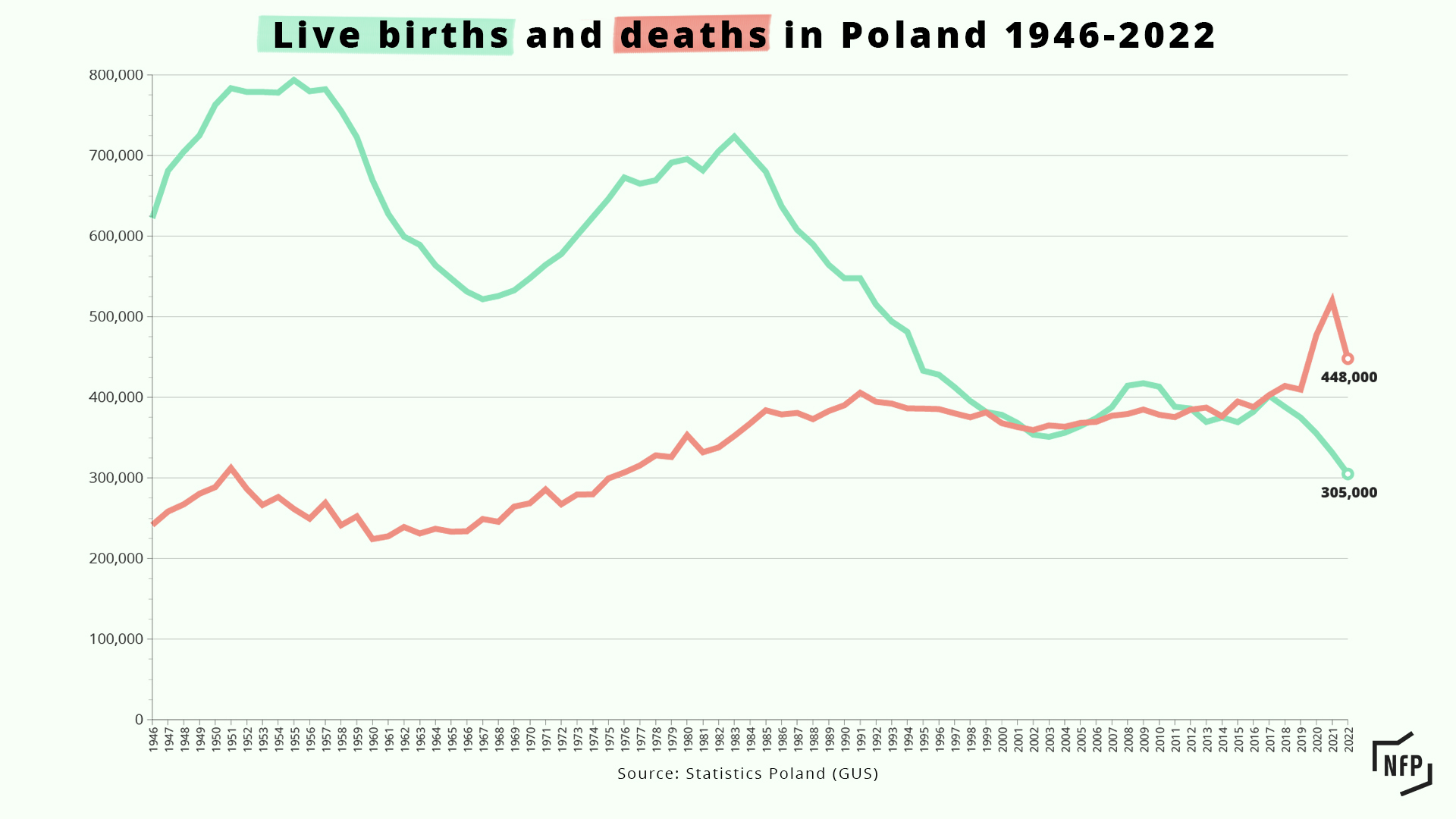The number of births in Poland last year was the lowest the country has seen since the Second World War while the number of deaths was higher than at any time other than in the pandemic-hit years of 2020 and 2021. It was also the tenth year in a row in which deaths have outnumbered births.
Meanwhile, new data from Poland’s recent national census shows that there has been a significant decline in the number of married couples, including those with children, over the last decade and an increase in cohabiting unmarried couples.

Figures published yesterday by state statistical agency GUS revealed that there were 305,000 births in 2022, down from 331,000 the previous year and 386,300 a decade earlier, in 2012.
The number of deaths in 2022 stood at 448,000. That was less than the 519,000 in 2021 – which was a postwar record – and 477,400 in 2020, but well above the pre-pandemic total of 409,700 in 2019.
In 2020, as Polish hospitals struggled amid the pandemic, Poland recorded the EU’s highest excess death rate and in 2021 it had the bloc’s second-largest population decline.
Poland’s government has sought to take a number of steps to boost the declining birthrate, including its flagship “500+” child-benefit programme. After that was introduced in 2016, there was a brief rise in births. But that was soon followed by a sharp, and so far continuous, decline.
In 2020, the government admitted that 500+ had not led to an increase in births. It has since announced a number of further “pro-family” policies, most recently plans to increase the number of daycare places by 100,000, 44% more than there are currently.
However, critics have argued that the government has contributed to the falling number of births through its conservative policies: for example by ending funding for IVF treatment and, above all, by supporting the introduction of a near-total ban on abortion that is believed to have discouraged women from having children.
Only 32% of women in Poland aged 18 to 45 say they are planning to have children, down from 41% in 2017.
Poland has a rapidly declining birth rate, and many believe that the new near-total ban on abortion has made women less likely to want to get pregnant https://t.co/w7J1imL7Ff
— Notes from Poland 🇵🇱 (@notesfrompoland) January 12, 2023
Preliminary figures from the decennial national census taken in 2021 have also confirmed that Poland faces the challenges of a declining and ageing population.
Yesterday, GUS released a further tranche of census data. They show that in 2021 there were 10.2 million families in Poland, 812,000 (7.4%) less than a decade earlier.
There were 7.3 million married couples recorded in 2021, representing 72% of all families. That was down from respective figures of 8.3 million and 74.3% in 2011. In 2021, there were 4.2 million married couples with children, 1.2 million less than a decade earlier.
The number of married couples without children rose by 14% over that period to reach 3 million. The number of such couples inceased by 9% in cities, which tend to be more liberal, and by 23% in rural areas, which are usually more conservative.
Meanwhile, 553,000 couples were cohabiting in an unregistered relationship in 2021 (half of them with children), up from 317,000 in 2011.
The average of number people living in each household declined from 3.14 in 2011 to 2.99 in 2021. Over that period, the proportion of single-person households rose from 20% to 23%.
Main image credit: freestocks/Unsplash

Daniel Tilles is editor-in-chief of Notes from Poland. He has written on Polish affairs for a wide range of publications, including Foreign Policy, POLITICO Europe, EUobserver and Dziennik Gazeta Prawna.



















